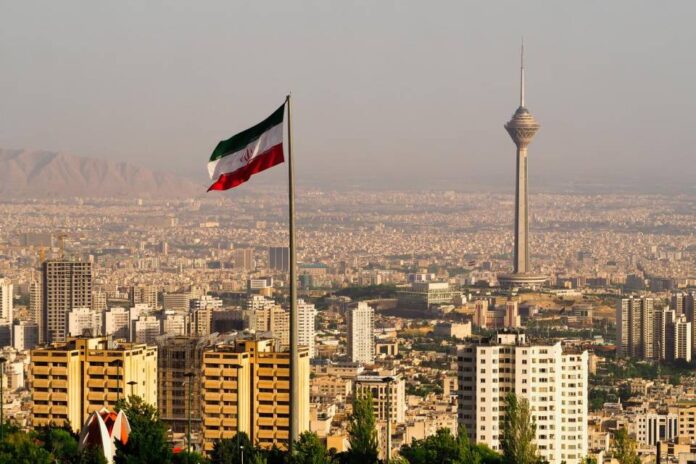Introduction to Iran as a Travel Destination
Iran is a land steeped in history,culture,and breathtaking landscapes.
From the ancient ruins of Persepolis to the vibrant bazaars of Tehran, this country has much to offer adventurous travelers.
Yet for many, concerns about safety overshadow its rich heritage and warm hospitality.
With stories circulating about political tensions and regional instability, it’s easy to wonder: How safe is it really to travel to Iran? This blog post aims to shed light on what you can expect when visiting this fascinating destination while helping you navigate any potential challenges along the way.
Whether you’re planning your first trip or just curious about life beyond the headlines, let’s explore Iran together!
Political and Safety Concerns
Iran has a complex political landscape that can raise concerns for travelers. The country’s relations with the West have been strained for decades, influencing perceptions of safety.
Tensions may be heightened due to regional conflicts or sanctions. While these factors shape headlines, most visitors find their experience quite different from what news reports suggest.
Incidents of unrest occasionally occur in urban areas, but they usually do not target tourists directly. Travelers often report feeling welcomed by locals eager to share their culture and hospitality.
Understanding local customs is crucial. Dress codes and social norms differ significantly from many Western countries, making awareness essential for a smooth trip.
Staying informed about current events can help mitigate worries as well. Knowledge about specific regions within Iran will further enhance your travel experience while ensuring safety remains a priority.
Current Travel Advisory
Travel advisories for Iran can vary widely depending on the country of origin. Many governments, including those in Europe and North America, often issue warnings about travel to certain regions within Iran due to political tensions.
It’s crucial to stay updated with your government’s travel advice. Certain areas may be labeled as high-risk zones where non-essential travel is strongly discouraged. Familiarize yourself with these specific locations before planning your itinerary.
Pay attention to local news reports and international relations developments that could affect safety conditions during your visit. The situation can change rapidly, so being informed is key.
Consult trusted resources like the U.
S. State Department or the UK Foreign Office for their latest assessments regarding safety in Iran. These platforms provide essential insights into any potential risks you might encounter while traveling across this fascinating country.
Safety Tips for Traveling to Iran
When traveling to Iran, awareness is key. Familiarize yourself with local customs and etiquette before your journey begins. Dress modestly to respect cultural norms; women often wear a hijab, while men should avoid shorts in public areas.
Stay connected by keeping important documents handy, including your passport and travel insurance details. Share your itinerary with someone back home for added security.
Be mindful of where you exchange currency; using official banks or authorized exchanges prevents scams. Avoid discussing political matters openly, as this can lead to misunderstandings.
Try learning a few Persian phrases—locals appreciate the effort and it enhances interactions. Always be cautious when taking photographs; some sites may have restrictions that are crucial to respect for safety purposes.
Cultural Experiences in Iran
Iran is a treasure trove of rich cultural experiences waiting to be explored. From the intricate tile work of ancient mosques to the vibrant bazaars filled with spices and textiles, there’s so much to see.
One cannot visit Iran without indulging in its culinary delights. Traditional dishes like kebabs and saffron rice are often accompanied by aromatic stews that tell stories of centuries-old recipes passed down through generations.
Persian hospitality is legendary. Locals take pride in welcoming visitors into their homes for tea or meals, sharing tales of their heritage and traditions.
Festivals such as Nowruz, the Persian New Year, offer glimpses into age-old customs celebrated with music, dance, and communal gatherings.
Art lovers will appreciate Iran’s thriving contemporary scene alongside historical art forms like calligraphy and carpet weaving. Each piece reflects a story—a connection to both past and present that captivates every traveler who ventures here.
Preparing for Your Trip: Visa, Currency, and Packing
When preparing for your trip to Iran, the first step is obtaining a visa. Many nationalities can apply online for an e-visa, but check specific requirements based on your country. The process is straightforward, yet it may take some time.
Next, familiarize yourself with the currency: the Iranian rial. While credit cards are not widely accepted due to sanctions, it’s wise to carry cash for daily expenses. Consider exchanging money before you arrive or use local exchange offices once in Iran.
Packing wisely makes a difference too. Dress modestly—especially women should wear a headscarf and loose-fitting clothing. Don’t forget essentials like adapters for electronics and any necessary medications.
Research local customs and etiquette to ensure respectful interactions during your visit. This preparation enhances both safety and enjoyment while exploring this fascinating destination.
Personal Accounts of Travelers to Iran
Travelers often share vivid stories about their time in Iran. Many describe the warmth and hospitality of the Iranian people. Strangers invite them for tea or to join family meals, creating bonds that last beyond borders.
One traveler recounted exploring the stunning architecture of Isfahan, where intricate tile work left her breathless. She felt a deep connection to history as she wandered through grand mosques and ancient bridges.
Others highlight their experiences in bustling bazaars filled with vibrant colors and enticing scents. Sampling local dishes like kebab and saffron ice cream remains a cherished memory for many.
Some travelers faced challenges related to language barriers but found ways to communicate through gestures and smiles. These moments often led to unexpected friendships, adding richness to their journey.
Each account reveals a unique perspective on Iran, showcasing its beauty, culture, and resilience amid misconceptions surrounding safety.
Conclusion: Is Iran Safe for Tourists?
Traveling to Iran comes with its set of complexities. While the country faces political challenges, many travelers have reported positive experiences. The rich culture and stunning landscapes often outweigh concerns about safety for those willing to embrace the adventure.
Advisories may suggest caution, but firsthand accounts illustrate a different narrative. Travelers frequently express their gratitude for the warm hospitality they receive from locals. Many feel secure exploring bustling bazaars or wandering through ancient ruins.
Preparation is key when considering a trip to Iran. Understanding visa requirements and local customs can enhance your experience significantly. Being informed allows you to navigate any potential risks effectively while enjoying this beautiful destination.
Whether Iran feels safe for tourists depends on individual perspectives and experiences. For some, it presents an opportunity for unforgettable memories; for others, it might invoke hesitation due to global perceptions.
The choice lies in your hands—research thoroughly, prepare well, and perhaps take that leap into exploring one of the world’s most captivating countries!





